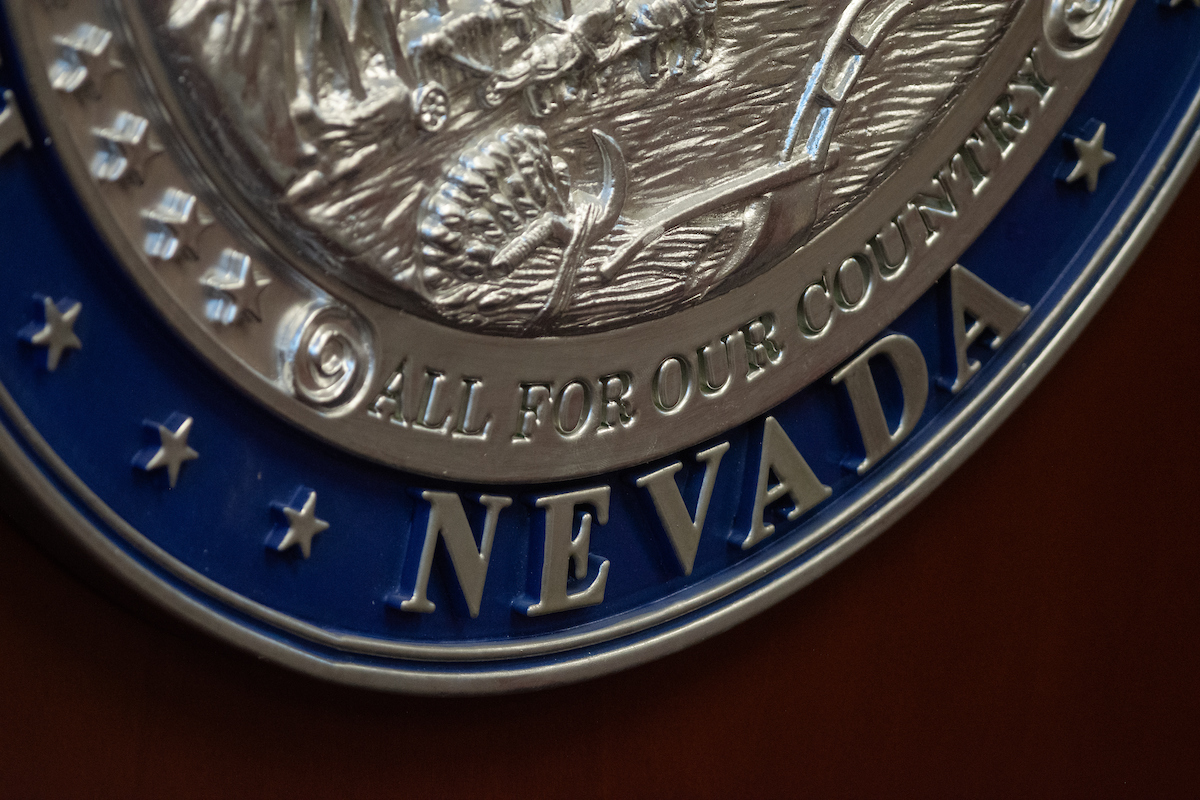Where is Nevada spending its $2.7 billion in American Rescue Plan funds?

When President Joe Biden signed the $1.9 trillion American Rescue Plan (ARP) into law in March 2021, Nevada legislators and state officials heralded the funding package, including nearly $7 billion for Nevada, as an opportunity to not only mitigate the COVID-19 pandemic, but to make long-term investments into the state’s services and administration.
More than 20 months later, nearly every single one of those dollars — including 96 percent of more than $2.7 billion in flexible state government aid — has been spent or assigned.
Of that pot, state lawmakers working alongside Sisolak’s administration have dedicated $530 million to housing, more than $218 million for preK-12 education and a massive pot of roughly $800 million for a slew of government services, state technology upgrades and administrative positions. That amount included $335 million to repay federal loans tapped to sustain unemployment benefits during the pandemic.
Though some dollars moved quickly out of state hands, including $30 million set aside for grants to community nonprofits, state leaders have characterized the flexible federal funds as a means to making long-needed investments in state services that would otherwise not have been possible.
On the day Biden signed the ARP into law, Democratic Gov. Steve Sisolak said in a statement that he looked forward to using the money to continue progress on reopening school buildings and stabilizing the economy, “while also developing a strategy to maximize these funds for long term benefits.”
During an October meeting of state lawmakers, Assemblywoman Maggie Carlton (D-Las Vegas) described the ARP funds as an “unprecedented amount of money,” which will “make huge structural change in the state.”
Previous federal stimulus packages, including the $2.2 trillion Coronavirus Aid, Relief and Economic Security Act passed in March 2020, helped state and local governments combat the spread of COVID-19 and stabilize the national economy. In Nevada, the unemployment rate skyrocketed to a record high of nearly 30 percent early in the pandemic, before falling to 9.2 percent by March 2021, and 4.4 percent in September.
The major federal relief bills also sent direct payments to taxpayers, helping keep workers afloat amid the economic turmoil and public health crisis.
With massive amounts of money already poured directly into the COVID-19 response efforts, the ARP funds provided Nevada officials with more funding than half of the state’s annual general fund budget, with relatively broad spending guidelines.
During the final weeks of the 2021 legislative session, lawmakers approved major allocations of the funding, including the $335 million to repay loans used to sustain the state’s unemployment fund and $215 million to address pandemic-related learning loss in schools.
Since then, only about one-third of state legislators have taken part in decisions to approve hundreds of millions of dollars in allocations. With a part-time Legislature that only convenes for 120 days every odd year, the Interim Finance Committee — a group of legislators that approves spending decisions outside of normal legislative sessions — has taken on an outsized role by being responsible for approving ARP spending decisions led by Sisolak’s administration.
With an unprecedented amount of flexible federal money to spend, Nevada officials, including Sisolak and Treasurer Zach Conine, embarked last summer and fall on a statewide listening tour to gather ideas from Nevadans on how to best allocate the dollars. Housing and health care often topped the list of concerns.
Those concerns were reflected in how Sisolak pushed to spend the funds. During an off-year state of the state address in February, he announced a broad set of ARP spending plans, including a $500 million affordable housing initiative later approved by the Interim Finance Committee.
Lawmakers have also approved sweeping investments in the state’s public and mental health services, which have often ranked among the worst in the nation because of a lack of providers and accessible care. Those investments included about $150 million for the expansion and construction of new public facilities across the state, including $75 million for a new facility at the Nevada State Public Health Laboratory at the University of Nevada, Reno.
Following an October meeting of the Interim Finance Committee, just $135 million of the more than $2.7 billion state general aid (less than 5 percent) remained unallocated, though $38.3 million of those dollars are already earmarked for “state agency programs.”
With a deadline to allocate the dollars by the end of 2024 — and spend them by the end of 2026 — Republican Gov.-elect Joe Lombardo will have that small 5 percent portion of the leftover funds to build into his recommended budget for the state.
Read through the charts below to explore how Nevada officials have allocated more than $2.6 billion in flexible aid from the American Rescue Plan:
